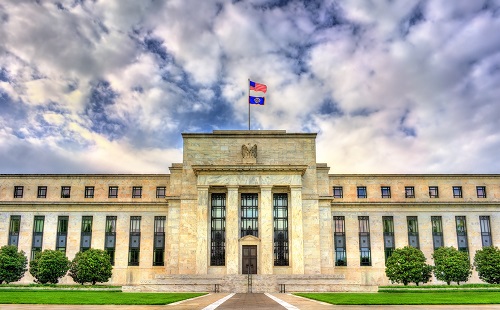U.S. stocks and bonds have both put on a significant rally this year. That has puzzled investors.
After all, stocks usually rally when the perception is that good economic times lie ahead.
Bonds, on the other hand, tend to rally when the outlook is more pessimistic, since that generally means interest rates will come down.
So the big question this year is this: Who’s right, stock investors or bond investors?
After the Federal Open Market Committee meeting Wednesday – headed by Federal Reserve Chairman Jerome Powell – it’s starting to look more like the bond investors are right.
This could have serious implications for your investment portfolio.
Fed officials now see no more interest rate increases this year and perhaps one next year.
This is a significant reversal from December, when the Fed indicated that more hikes lay dead ahead in 2019.
If the Fed is correct now – always a big if, given its track record – how did it get it so wrong three months ago?
After all, the stock market went into a funk in the fourth quarter precisely because investors believed short-term rates were moving up too fast in an economy that was solid but hardly spectacular.
Moreover, Wednesday’s actions made Donald Trump look like a soothsayer – not always easy – when he proclaimed in October that the Fed had “gone crazy” with its rate tightening.
Trump is no expert on monetary policy, of course.
As a businessman, he realizes that higher borrowing costs dampen growth. And the last thing he wants going into the 2020 elections is an economy in recession.
What the Fed sees now – indeed what all investors see – is that the economy is chugging, unemployment is near record lows and inflation is not a problem.
What everyone also sees, unfortunately, is that retail sales are softer than expected, business investment is downbeat and the announcement of only 20,000 net new jobs in February was a bummer.
Plus, growth is slowing in China and barely positive in most of Europe and Japan.
So we’re at an interesting juncture here.
Either the U.S. economy is going to defy the rest of the world’s economies and stay strong, taking stocks even higher…
Or economic growth is going to wane, leading to lower share prices and a serious conundrum for policy makers.
After all, the Fed doesn’t have many arrows in its quiver. At most, it can cut interest rates a bit more than two percentage points, less than half of what is required in most recessions.
(And let’s remember that bond yields in Europe and Japan still have a minus sign in front of them, putting those central banks between a real rock and a hard place.)
The Fed could restart its bond buying, but that would expand its balance sheet beyond levels reached in the depths of the last downturn.
And how is Congress going to manage fiscal stimulus when a) the two major parties can’t even agree on what to have for lunch and b) we’re already running more than a $1 trillion annual deficit during an economic expansion?
This is what Warren Buffett meant last month when he said in a CNBC interview, “We live in a world that wasn’t described by classical economics.”
What is the key investor takeaway here?
Just this: While no one can predict when the next downturn will occur, it could turn out to be nastier than usual due to limited policy options in Washington (and other world capitals) and at the Fed.
So check your asset allocation – how you divide your portfolio among stocks and more conservative asset classes – to make sure it’s appropriate for your age, risk tolerance and time horizon.
And be sure to run trailing stops behind your individual stock positions. They give you unlimited upside potential with strictly limited downside risk.
You’ll be glad you did when the next downturn comes, because it may be a doozy.
Good investing,
Alex
